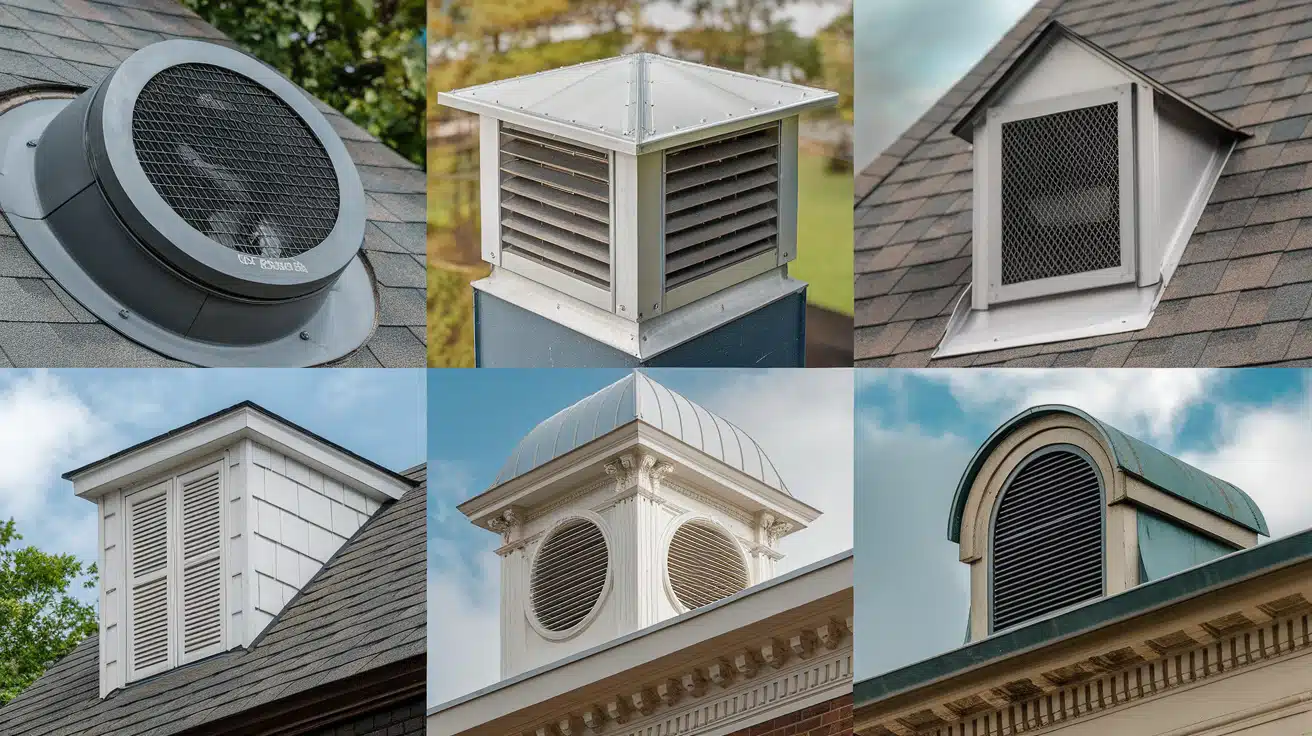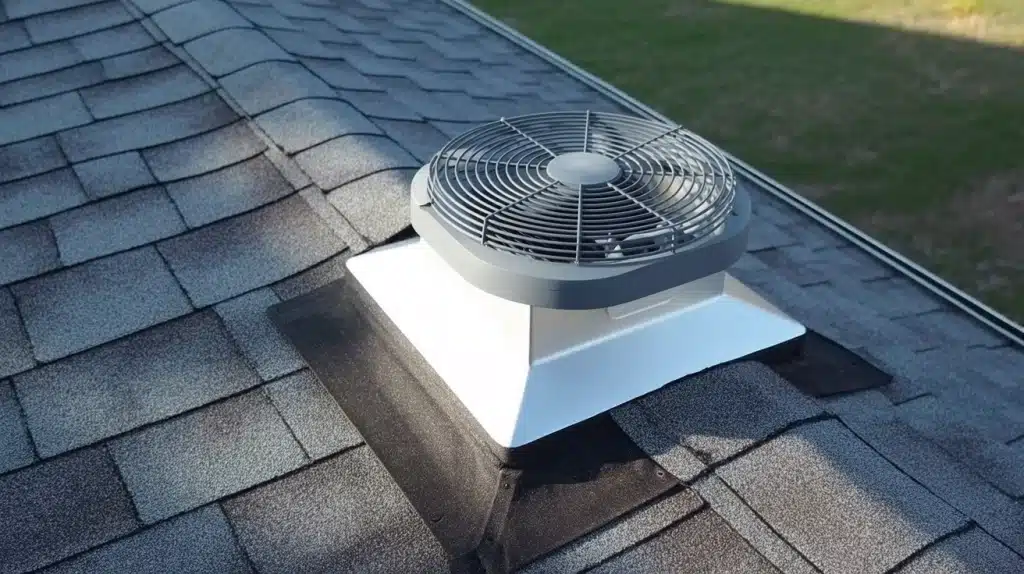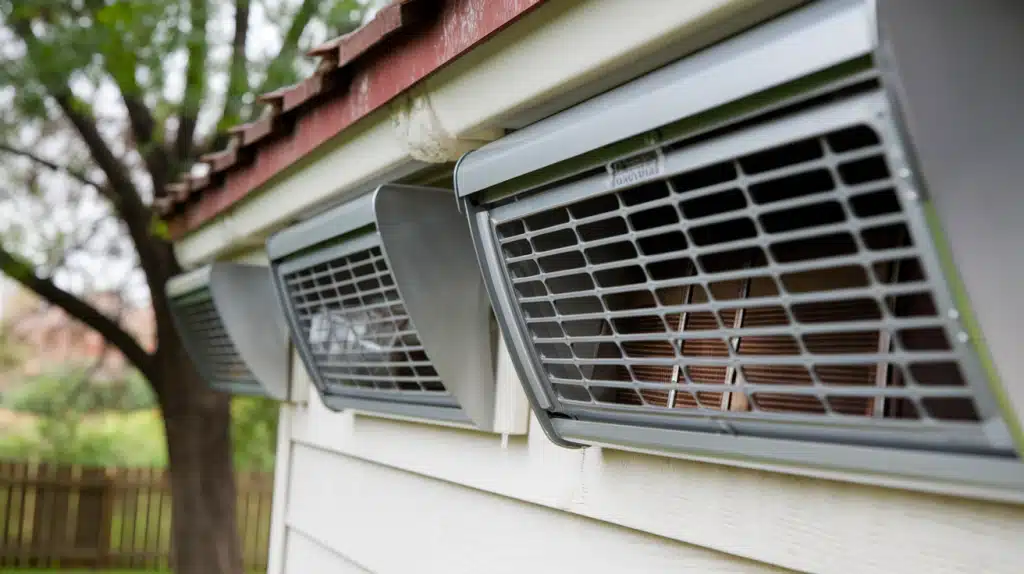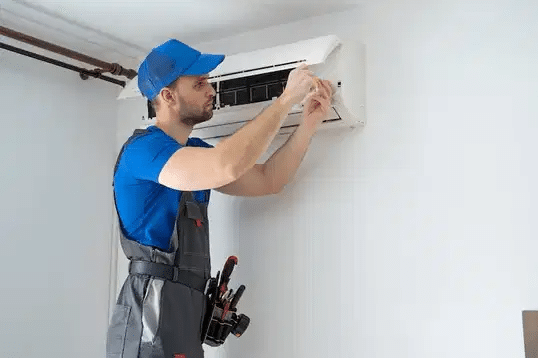Hot, stuffy attics cost homeowners thousands in energy bills every year.
Poor ventilation traps moisture, which fosters mold growth, damages insulation, and forces air conditioners to work harder during the summer heat.
Many people don’t realize their roof needs to breathe just like their lungs do.
The solution is simpler than you think. Proper roof ventilation, using the right types of vents, can reduce cooling costs by 30%, prevent costly moisture damage, and extend your roof’s lifespan by several years.
We’ll cover different types of roof vents, explain how each one works, and help you choose the perfect system for your home’s specific needs, climate, and budget.
Ready to stop overpaying for comfort and start protecting your most significant investment?
Why Roof Ventilation Matters?
Good roof ventilation keeps your home healthy and saves you money. Without proper airflow, moisture becomes trapped in your attic, causing mold growth that can spread throughout your house.
Hot air builds up during summer, making your air conditioner work harder and increasing energy bills by up to 30%.
Poor ventilation also damages shingles from the inside out, causing them to curl, crack, and fail years before they should.
When your roof breathes properly, it protects your family’s health, cuts cooling costs, and helps your roof last its full expected lifespan of 15-25 years.
How Roof Vents Work?
- Cool air enters low- Fresh outside air flows in through intake vents located under the eaves or soffits of your roof.
- Hot air rises high- Warm, stale air naturally rises and escapes through exhaust vents placed on roof ridges or peaks.
- Natural stack effect – Temperature differences create continuous airflow as hot air rises and cool air sinks, requiring no external power.
- A balanced system is required – you need equal amounts of intake and exhaust vents for proper air circulation (typically 1 square foot of ventilation per 300 square feet of attic space).
- Moisture removal – Moving air carries away humidity from daily activities, such as cooking, showering, and breathing, before it condenses into harmful water droplets.
- Temperature control – Proper airflow prevents attic temperatures from reaching 140-160°F in the summer, which would cause your cooling system to work much harder.
Choosing the Right Roof Vent: 11 Types Compared
Learn the 11 most common types of roof vents, their features, pros and cons, and learn how to choose the best option for your home’s ventilation needs.
1. Ridge Vents
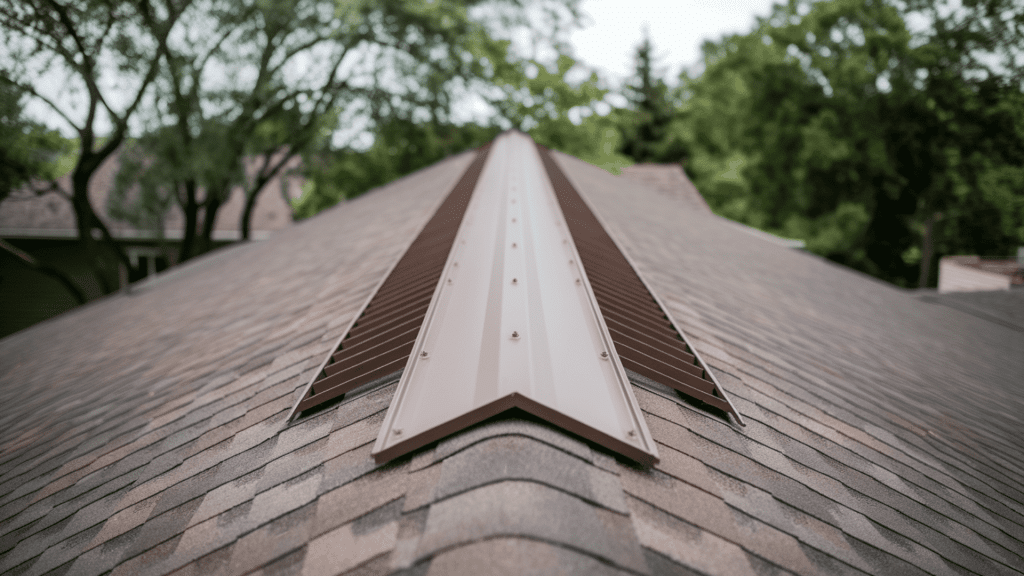
Installed along the peak of your roof where two slopes meet. These vents run the entire length of your roof ridge and blend with your roofline.
Benefits:
- Provides uniform ventilation across your entire attic space
- Nearly invisible from ground level for better curb appeal
- No moving parts means less maintenance and a longer lifespan
- Works with natural air currents without electricity
Best Uses: Perfect for most residential homes with peaked roofs. Works best when paired with soffit vents for complete air circulation.
2. Box Vents
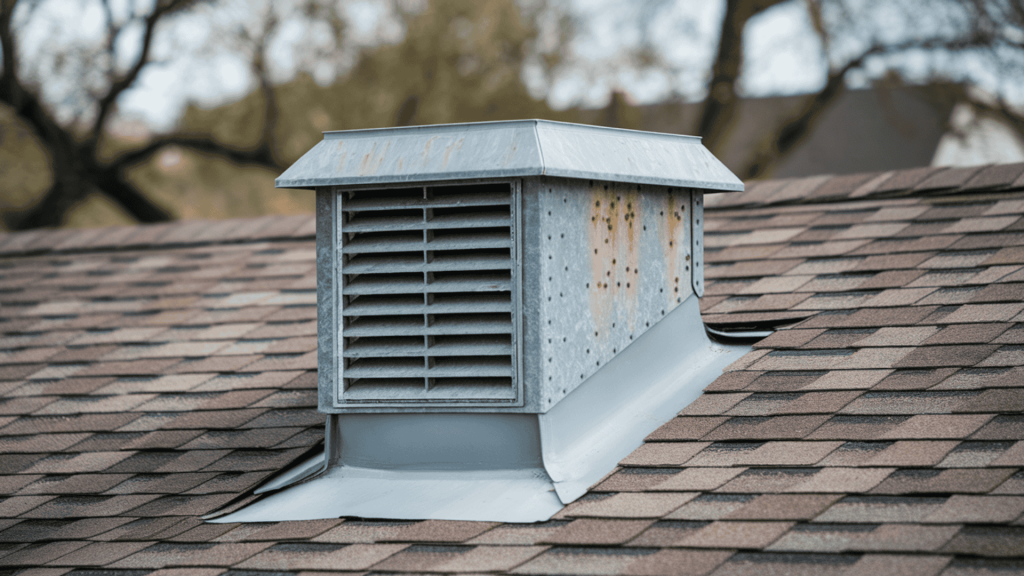
Square or rectangular vents that sit on your roof surface. Made from metal or plastic with louvers to prevent rain entry.
Benefits:
- Simple installation and affordable cost
- No electricity required – completely passive system
- Durable design withstands harsh weather conditions
- Easy to replace if damaged
Best Uses: Great for homes that can’t install ridge vents or need extra exhaust capacity. Works well on flat or low-pitched roofs.
3. Off-Ridge Vents
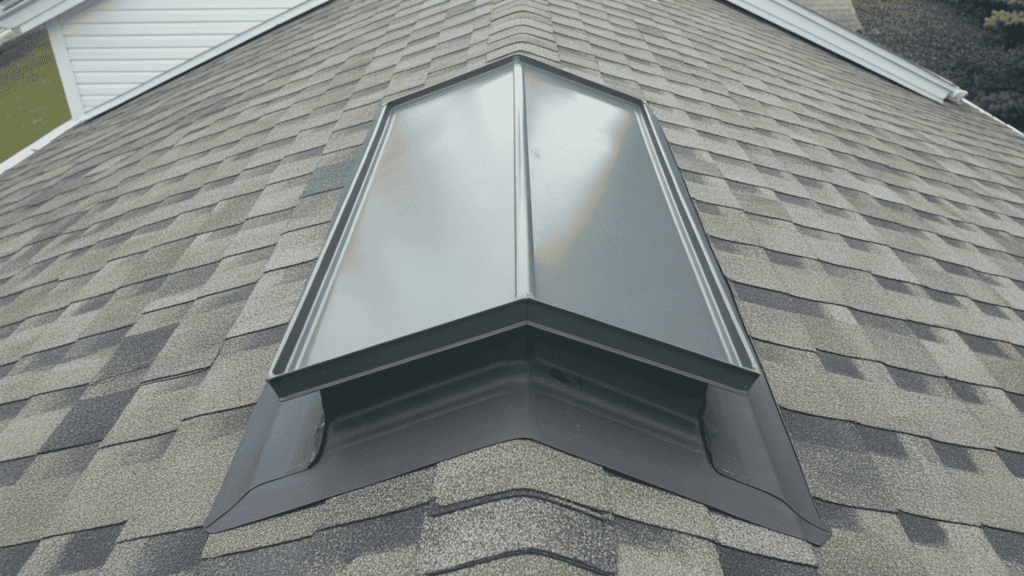
Smaller vents are installed near (but not on) the roof ridge. Available in round or square shapes with weather-resistant caps.
Benefits:
- Less expensive than complete ridge vent systems
- Quick installation with minimal roof cutting
- Good ventilation performance for smaller attics
- Works on roofs where ridge vents aren’t possible
Best Uses: Ideal for smaller homes, additions, or roofs with complex designs where ridge vents won’t fit properly.
4. Wind Turbine Vents
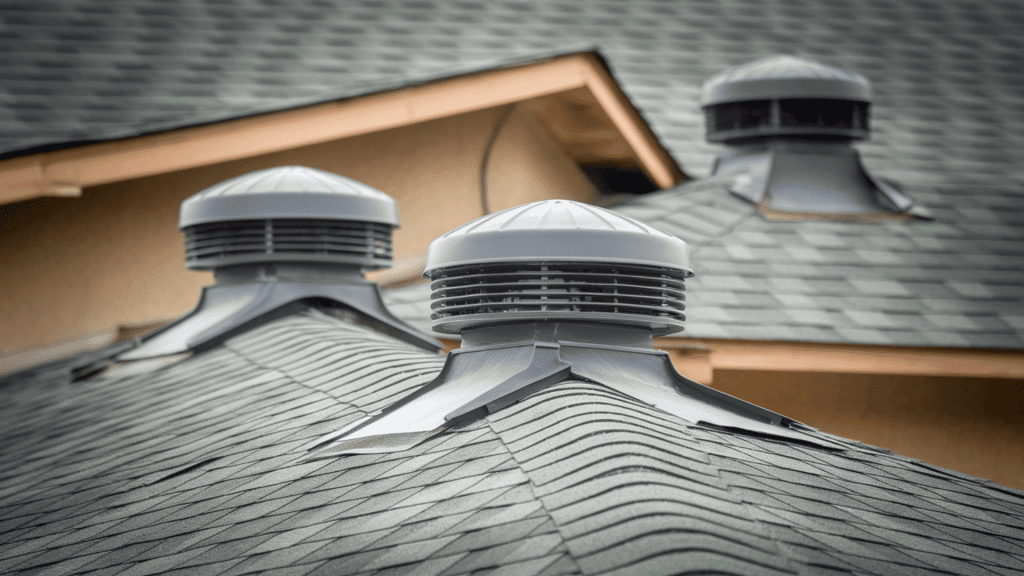
Round vents with spinning blades that rotate in response to wind movement. Made from aluminum with ball bearings for smooth operation.
Benefits:
- Active ventilation that increases with wind speed
- Moves more air than passive vents when windy
- No electricity costs while providing powered ventilation
- Visible indicator, you can see if it’s working
Best Uses: Perfect for windy areas and homes needing extra ventilation power. Not recommended for areas with frequent calm weather.
5. Cupola Vents
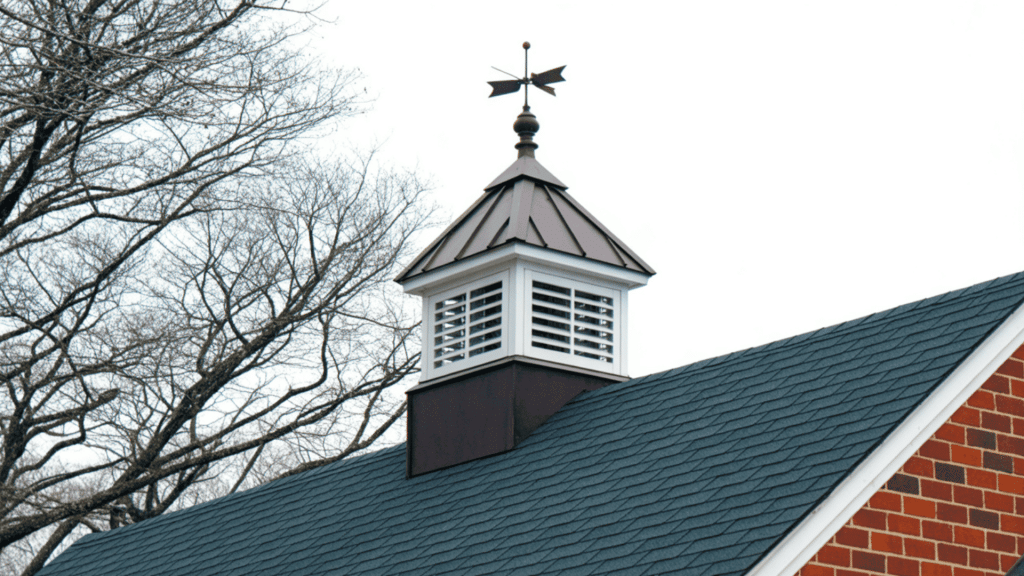
Decorative structures that sit on top of your roof peak. Often square or octagonal with windows and a small roof.
Benefits:
- Adds architectural interest and property value
- Provides good ventilation through multiple openings
- Can house weather vanes or decorative elements
- Traditional look that suits many home styles
Best Uses: Best for barns, sheds, colonial homes, or properties where appearance matters as much as function.
6. Soffit Vents
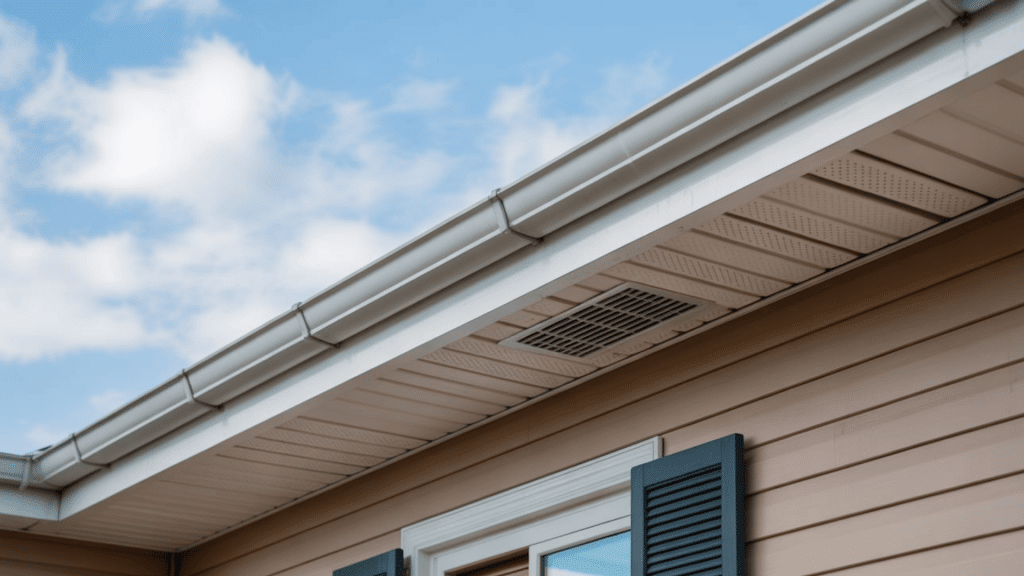
Intake vents are installed under the overhang of your roof (soffit area). Available as continuous strips or individual rectangular vents.
Benefits:
- Essential intake component for proper ventilation
- The hidden location maintains a clean roof appearance
- Prevents pests from entering while allowing airflow
- Low maintenance once properly installed
Best Uses: Required for almost every ventilation system. Works with any exhaust vent type to create complete air circulation.
7. Gable Vents
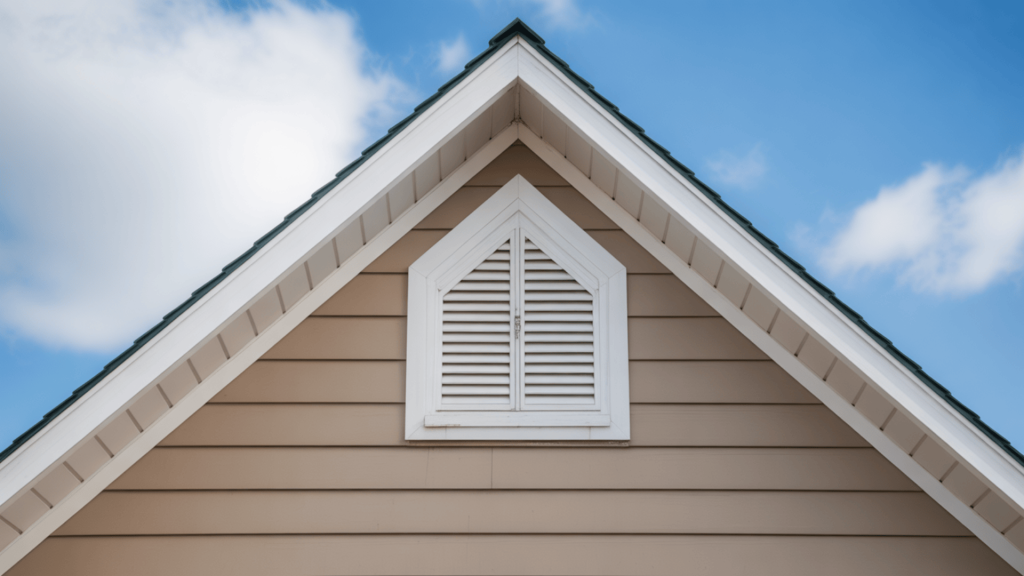
Triangular or rectangular vents are installed on exterior gable walls. Often decorative with louvers to control airflow direction.
Benefits:
- Easy installation without cutting roof materials
- Good cross-ventilation when installed on opposite walls
- Can serve as intake or exhaust depending on wind direction
- Less likely to leak than roof-mounted options
Best Uses: Effective for homes with prominent gable ends. Often used with other vent types for complete coverage.
8. Solar-Powered Roof Vents
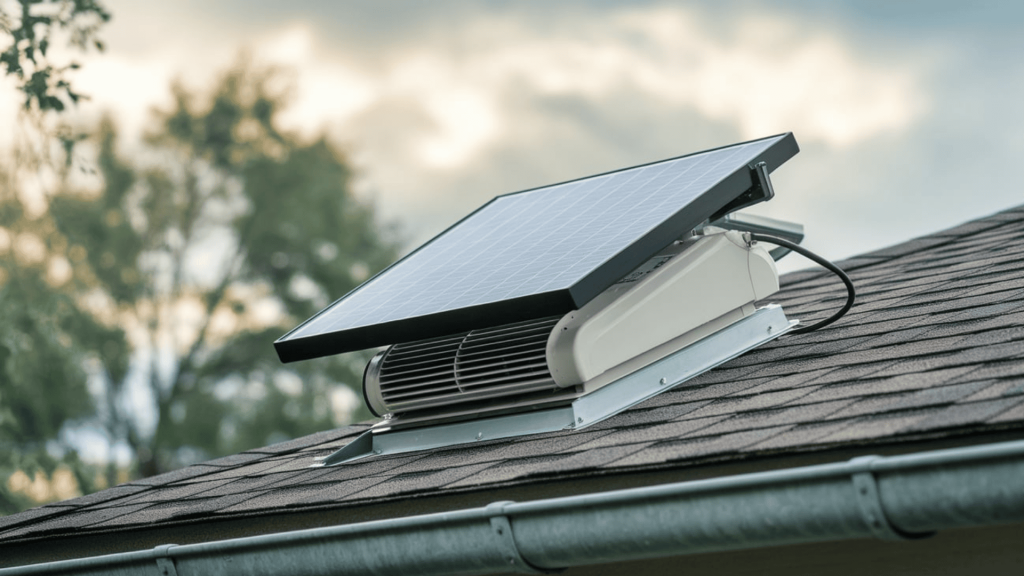
Small solar panels power electric fans. Operate automatically when the sun provides enough energy to run the motor.
Benefits:
- Environmentally friendly with no electricity costs
- Powerful air movement during peak heat hours
- Automatic operation – no switches or controls needed
- Long-term savings on energy bills
Best Uses: Perfect for sunny climates and eco-conscious homeowners. Great for homes with high cooling costs.
9. Power Vents
Motor-driven fans that plug into your home’s electrical system. Include thermostats and sometimes humidity controls.
Benefits:
- Strongest air movement of any vent type
- Operates regardless of weather conditions
- Adjustable controls for custom ventilation needs
- Quick results when you need immediate cooling
Best Uses: Ideal for very hot climates, large attics, or homes with serious moisture problems.
10. Over-Fascia Vents
Low-profile intake vents are installed over your fascia board. Designed to be nearly invisible from ground level.
Benefits:
- Clean appearance that doesn’t interrupt rooflines
- Good intake capacity without visible vents
- Protects the fascia board from weather exposure
- Works when soffit vents aren’t possible
Best Uses: Perfect for homes where appearance is critical or soffit installation isn’t practical.
11. Continuous Vents
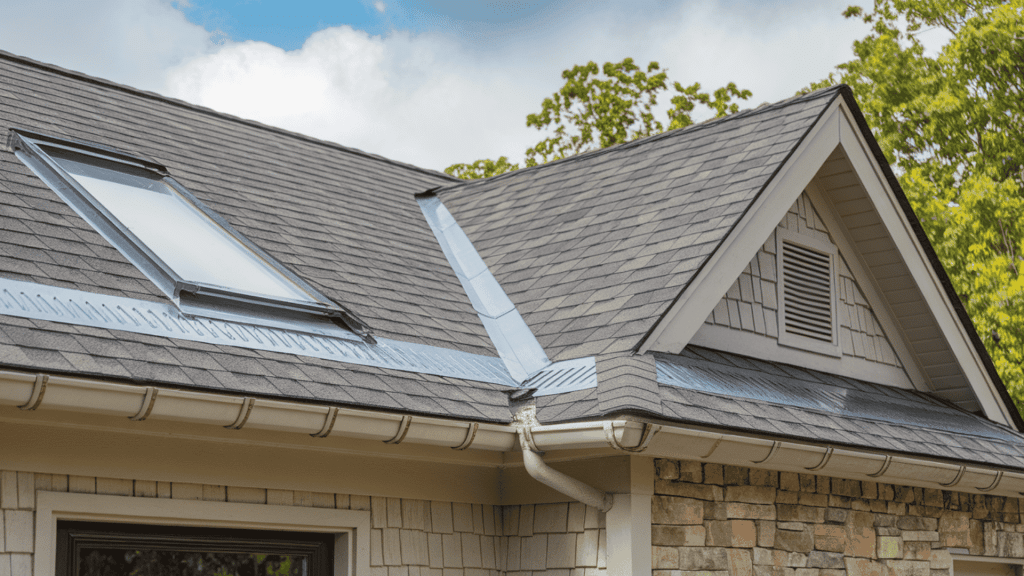
Long strips of ventilation material installed along the roof edges. Combines drip edge function with intake ventilation.
Benefits:
- Provides consistent airflow along the entire roof perimeter
- Dual function saves installation time and costs
- Less visible than individual vent units
- Good backup for soffit vents
Best Uses: Ideal for homes requiring additional intake capacity or where traditional soffit vents are ineffective.
Choosing the Right Roof Vent for Your Home
Selecting the best roof vent for your home depends on three key factors that work together.
Climate plays the most significant role; hot, humid areas require powerful exhaust vents, such as ridge or solar-powered options, while windy regions benefit from turbine vents that utilize natural air movement.
Your roof design matters too; steep-pitched roofs work well with ridge vents, while flat or low-slope roofs need box vents or power fans for adequate airflow.
Budget and energy goals help narrow your choices. Passive vents, such as soffit and ridge systems, are less expensive upfront and require no electricity, while active options, like solar or electric fans, are more expensive initially but provide stronger ventilation and potential energy savings.
The best roof vent system combines proper intake (usually soffit vents) with the right exhaust type for your specific home, climate, and budget needs.
Conclusion
The right roof ventilation system protects your home and saves money year after year.
From simple soffit vents to high-tech solar fans, each of the roof vent types we covered serves specific needs based on your climate, roof design, and budget.
Remember that proper ventilation requires both intake and exhaust vents to work together; one without the other will not work effectively.
Don’t let poor ventilation damage your home or drain your wallet through high energy bills. Most homeowners see immediate results once they install the right combination of roof vents tailored to their specific situation.
Ready to improve your home’s ventilation? Contact a qualified roofing professional to assess your current system and recommend the best roof vent solution for your specific needs.
Designing your dream outdoors? Explore more exterior design inspiration and tips.
Frequently Asked Questions
What Are the Four Types of Roof Vents?
The four main types are intake vents (soffit vents), exhaust vents (ridge or box vents), active vents (powered fans), and passive vents (static designs), although there are 11 specific varieties to choose from.
When Should You Not Install a Ridge Vent?
Avoid ridge vents on hip roofs with short ridge lines, roofs with a pitch of less than 4/12, or homes without adequate soffit vents for proper air intake.
What Is the Best Venting System for a Roof?
The best system combines soffit vents for intake with ridge vents for exhaust, providing continuous airflow across your entire roof without the need for electricity or moving parts.
What Is the Best Type of Attic Vent?
Ridge vents paired with soffit vents offer the best overall performance, as they provide uniform ventilation, require no maintenance, and work in conjunction with natural air currents.

